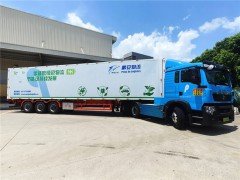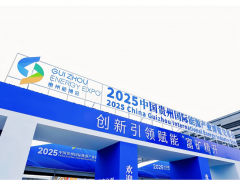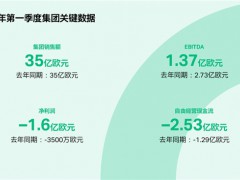據美國鉆井網站2022年10月19日報道,根據伍德麥肯茲的一項最新分析,拉丁美洲的海上風力發電項目將大幅增加,到2050年前海上風電裝機容量將達到34吉瓦。
從2032年起,拉丁美洲地區第一批風力發電項目預計上線時,海上風力發電活動將15.4%的年復合增長率。帶頭的將是巴西和哥倫比亞。
伍德麥肯茲電力和可再生能源研究分析師卡里斯·普拉多表示:“我們已經看到了支持海上風電發展的重大監管行動,巴西和哥倫比亞為未來的海上風電活動提供了官方路線圖和指導方針。”“兩國都有越來越多的已規劃項目,截至今年第三季度,今年拉丁美洲已宣布的管道增長已占全球新項目宣布的34%。”
海上風力發電能力的價值在于支持綠色氫氣項目,這些綠色氫氣項目有望在國內能源使用和出口方面發揮重要作用。伍德麥肯茲預測,到2050年,巴西將占據全球綠色氫氣供應總量的近6%,2030年后市場規模將進一步擴大。然而,巴西全國只有20%的綠色氫氣設施將是并網發電。
普拉多說:“這些海上風力發電項目大部分將是離網型項目,其中一部分將由海上風能和其他可再生能源支持。”“這將對巴西未來的經濟和作為全球能源出口國的長期地位發揮關鍵作用。然而,在監管方面仍有許多工作要做,要實現這一目標仍面臨許多挑戰。”
開發商目前面臨的挑戰包括有限的能源需求、輸電基礎設施的限制、來自其他來源的競爭、項目的可融資性以及供應鏈問題。
“盡管存在這些挑戰,但該行業仍有起飛的機會。如果監管加強和基礎設施投資加快,再加上新興的綠色氫氣產業,未來海上風電產能可能超過拉丁美洲地區的預期。”普拉多說。
李峻 編譯自 油價網
原文如下:
Latin America Offshore Wind Capacity To Reach 34 GW By 2050
Latin America will see a sharp increase in offshore wind projects, with capacity reaching 34 GW by 2050, according to a new analysis from Wood Mackenzie.
Offshore wind activity will correspond to a 15.4 percent compound annual growth rate starting from 2032 when the first projects are expected to come online in the region. Leading the way will be Brazil and Colombia.
“We have seen significant regulatory movement in support of offshore wind developments, with Brazil and Colombia providing official roadmaps and guidelines for future activity,” said Kárys Prado, Research Analyst for Power and Renewables at Wood Mackenzie. “Both countries have an increasing number of planned projects, and this year’s announced pipeline growth in Latin America already represents a 34 percent share of global new project announcements, as of the third quarter of 2022.”
The value of offshore wind capacity will be to support green hydrogen projects that look to play an important role in domestic energy use and exports. Wood Mackenzie forecasts that Brazil will capture close to 6 percent of the world’s total green hydrogen supply through 2050, with the market gaining scale after 2030. However, only 20 percent of the green hydrogen installations in the country will be grid-connected.
“The majority of these projects will be off-grid and part of it will be supported by offshore wind, alongside other renewables,” said Prado. “This will play a key role in the country’s future economy and long-term position as a global energy exporter. However, there is still much work to be done on the regulatory front and many challenges remain to make this a reality.”
Current challenges facing developers include limited energy demand, transmission infrastructure constraints, competition from other sources, project bankability, and supply chain issues.
“Despite all these challenges, there is an opportunity for the industry to take off. If regulation and infrastructure investments accelerate, combined with the fledgling green hydrogen industry, future offshore wind capacity could exceed expectations in the region,” concluded Prado.
免責聲明:本網轉載自其它媒體的文章及圖片,目的在于弘揚石化精神,傳遞更多石化信息,宣傳國家石化產業政策,展示國家石化產業形象,參與國際石化產業輿論競爭,提高國際石化產業話語權,并不代表本網贊同其觀點和對其真實性負責,在此我們謹向原作者和原媒體致以崇高敬意。如果您認為本站文章及圖片侵犯了您的版權,請與我們聯系,我們將第一時間刪除。







